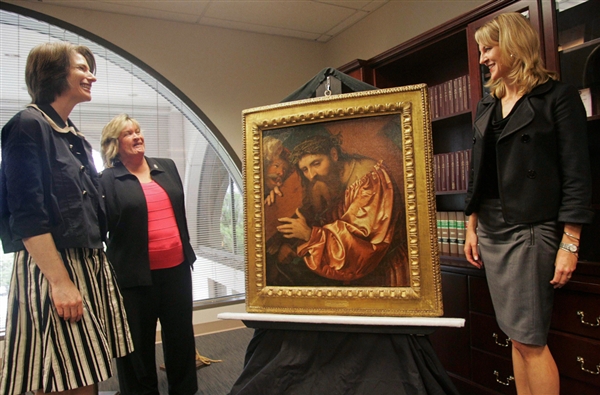On 16 May, 2012 With
The work in question is a 1538 painting by Girolamo de Romani, also known as Romanino, depicting an image of Jesus Christ in an unusual copper-colored robe, carrying the cross on his right shoulder while being dragged by a soldier. It was held in private collections by European families until 1914, when Gentili purchased it. When the Nazis marched into France, many of Gentili’s heirs fled — but weren’t able to take the family patriarch’s art collection and many other valuables. Vichy French authorities auctioned off the property, including more than 70 pieces of art, and barred the family from returning to claim the art work in 1941. The Romanino painting was acquired by the Italian government-run museum Pinacoteca di…
Read More
On 6 Nov, 2010 With
The Art of the Third Reich, the officially approved art produced in Nazi Germany between 1933 and 1945, was characterized by a style ofRomantic realism based on classical models. While banning modern styles as degenerate, the Nazis promoted paintings and sculptures that were narrowly traditional in manner and that exalted the “blood and soil” values of racial purity, militarism, and obedience. Other popular themes for Nazi art were the Volk at work in the fields, a return to the simple virtues of Heimat (love of homeland), the manly virtues of the National Socialist struggle, and the lauding of the female activities of child bearing and raising (Kinder, Küche, Kirche). Similarly, music was expected to be tonal and free of jazz influence; films and plays were censored. Nazi art bears a close similarity to…
Read More


